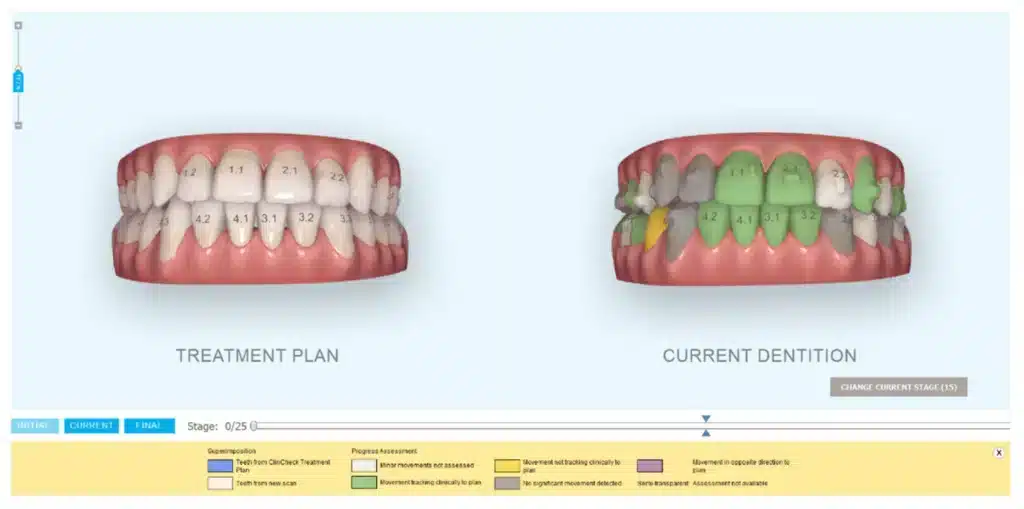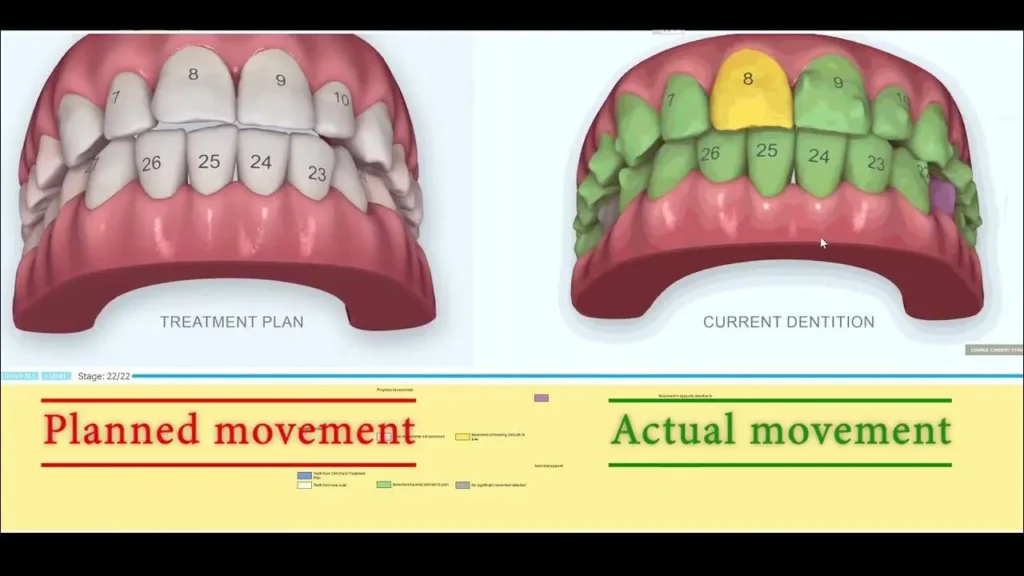Orthodontics has experienced a remarkable transformation over the past decade. Gone are the days when patients endured bulky metal braces and prolonged, uncomfortable treatments. Today, thanks to modern orthodontic techniques and the rise of digital braces solutions, smile correction has become more efficient, comfortable, and aesthetically tailored to individual needs.
This shift is not merely cosmetic; it’s a complete evolution in how orthodontic care is delivered. The integration of cutting-edge technology, AI-driven diagnostics, and patient-centered approaches has redefined what it means to undergo smile correction. In this article, we explore the forefront of orthodontics, focusing on digital braces, innovative treatment options, and how they collectively enhance patient experience and outcomes read more.


The Rise of Digital Braces Solutions
Embracing Technology in Orthodontics
Digital braces solutions represent a cornerstone of modern orthodontic techniques. These systems leverage 3D imaging, smart software, and precise fabrication processes to create orthodontic devices that are customized to the millimeter. Instead of standard wires and brackets applied manually, orthodontists now plan each stage digitally, using simulations to map tooth movements with unprecedented accuracy.
Digital workflows improve treatment efficiency and reduce human error. For instance, once a patient’s intraoral scan is taken, a digital blueprint of the mouth is created. Software then predicts how each tooth will move over time, and braces or aligners are manufactured to execute that plan read more.
3D Printing and Personalization
One of the most impressive aspects of digital braces solutions is their reliance on 3D printing. Using this technology, orthodontic appliances like aligners, brackets, and retainers are custom-printed for each patient. The result is a device that fits better, feels more comfortable, and works more effectively.
These personalized components also cut down the need for adjustments and remakes, which traditionally added to the treatment timeline and cost. Clinics equipped with in-house 3D printers can deliver appliances within days, enabling faster starts and fewer visits.
Improved Patient Monitoring Through Smart Devices
Today’s braces are not just passive mechanical systems. Some come embedded with sensors that track wear time, bite force, or even oral hygiene conditions. These smart devices sync with mobile apps to provide real-time feedback to patients and orthodontists.
For patients, this means better adherence to treatment. For practitioners, it means more data, better insights, and more accurate modifications throughout the process. Such advances demonstrate how modern orthodontic techniques go far beyond mechanics—they merge healthcare with smart technology.
Innovative Smile Correction: A New Era in Dental Aesthetics
Moving Beyond Traditional Approaches
Innovative smile correction isn’t just about straight teeth anymore. It’s about harmony—between facial features, jaw alignment, and personal confidence. While older systems focused purely on occlusion (how the teeth fit together), today’s orthodontic care incorporates aesthetics, speech, posture, and even mental health. These comprehensive approaches are reshaping both clinical practices and patient expectations.
Modern orthodontic techniques have redefined what a “perfect smile” means. It’s not just alignment—it’s how the smile fits the face, how it reflects personality, and how it functions naturally without discomfort or strain.
Aesthetic-Driven Solutions
One of the most requested outcomes of innovative smile correction is subtlety. Patients now seek treatments that are nearly invisible. Clear aligners, lingual braces (braces behind the teeth), and ceramic systems are in high demand. These aesthetic appliances offer the same level of effectiveness as metal braces but with minimal impact on appearance.
The appeal of aesthetic-driven correction is particularly strong among adult patients, many of whom postponed orthodontic treatment in their youth due to social stigma or discomfort. Modern orthodontic techniques now offer discreet solutions that fit seamlessly into adult lifestyles and careers.
Customized Treatment Plans
Customization is at the heart of innovative smile correction. Each treatment plan begins with an in-depth analysis of facial structure, bite function, and lifestyle preferences. Digital modeling software lets orthodontists predict tooth movement and simulate different outcomes. Patients can even preview their new smile before starting treatment.
These tools help patients understand their journey, increasing motivation and compliance. The result? Shorter treatment durations, better alignment, and higher satisfaction rates.
Integrating Wellness Into Orthodontic Care
Psychological Benefits of Smile Correction
There is growing recognition of the mental health benefits associated with orthodontic care. Patients often report increased self-esteem, improved social confidence, and reduced anxiety after completing treatment. This emotional aspect is now considered a vital component of modern orthodontic techniques.
Innovative smile correction doesn’t just address physical misalignments—it also restores psychological balance. Many clinics now include wellness consultations or offer access to psychological support during the course of treatment, especially for patients with body image concerns.
Orthodontics and Breathing Health
Orthodontists are playing a bigger role in identifying and treating airway issues. Conditions like sleep apnea and mouth breathing are linked to poor jaw development and bite misalignment. Modern orthodontic techniques use appliances that expand the palate or reposition the jaw to open airways and improve breathing.
Innovative smile correction today includes evaluating how the teeth, tongue, and jaw affect overall respiratory health. This holistic view of orthodontics reflects a shift toward long-term, whole-body wellness.
Preventive Care and Early Intervention
The Role of Pediatric Orthodontics
One of the most promising developments in digital braces solutions is their use in early intervention. Pediatric orthodontics is no longer reactive—it’s preventive. Orthodontists are now using growth forecasting tools to identify potential issues in children as young as six or seven.
By guiding jaw growth and preventing overcrowding, these interventions can reduce or eliminate the need for complex treatments in the future. Space maintainers, palatal expanders, and habit-correction devices are applied at early stages for maximum benefit.
Habit Correction and Myofunctional Therapy
Orthodontic specialists are now working closely with speech therapists and oral myologists to correct habits that negatively affect smile development—such as thumb sucking, tongue thrusting, and mouth breathing. Myofunctional therapy exercises the muscles around the mouth and jaw to promote healthier function and alignment.
This form of collaborative care is a strong example of how modern orthodontic techniques are no longer confined to hardware. They involve behavior, muscle control, and education—especially when treating children.
Remote Orthodontic Care and Digital Expansion
Teledentistry and Virtual Consultations
Digital braces solutions have opened the door for teledentistry. Patients can now receive consultations, progress checkups, and even minor adjustments remotely. All they need is a smartphone and an app.
This innovation is particularly valuable in rural or underserved areas, where access to in-person orthodontic care may be limited. It also enhances convenience for busy patients who struggle to attend frequent appointments.
Orthodontists can review intraoral scans, photos, and video consultations to provide feedback. These systems reduce wait times and improve patient compliance.
At-Home Orthodontic Kits
At-home aligner kits have surged in popularity, offering lower-cost alternatives for mild to moderate misalignments. While these systems are often controversial among professionals, new hybrid models are emerging—blending remote treatment with supervised in-office care.
Such innovations are democratizing access to innovative smile correction. However, leading professionals emphasize the need for some clinical oversight to avoid complications and ensure optimal results.
Sustainable Orthodontic Practice
Eco-Friendly Materials and Clinic Design
As environmental awareness grows, orthodontic clinics are adopting sustainable practices. Biodegradable aligners, recyclable packaging, and energy-efficient equipment are becoming standard in modern orthodontic techniques. Digital recordkeeping eliminates the need for paper files, while LED lighting and water-saving devices reduce waste.
Patients increasingly value eco-responsible clinics, especially younger generations. Sustainability is now a factor in choosing a provider, not just for ethical reasons but also for the trust it conveys.
Reducing Clinical Waste With Digital Braces
Digital braces solutions also reduce waste by improving accuracy. Since appliances are created with high precision, fewer remakes or adjustments are needed. This means less material is discarded, fewer shipments are required, and overall clinic waste is minimized.
In addition, remote monitoring reduces unnecessary trips to the clinic, lowering carbon emissions and saving time for patients and providers alike.
